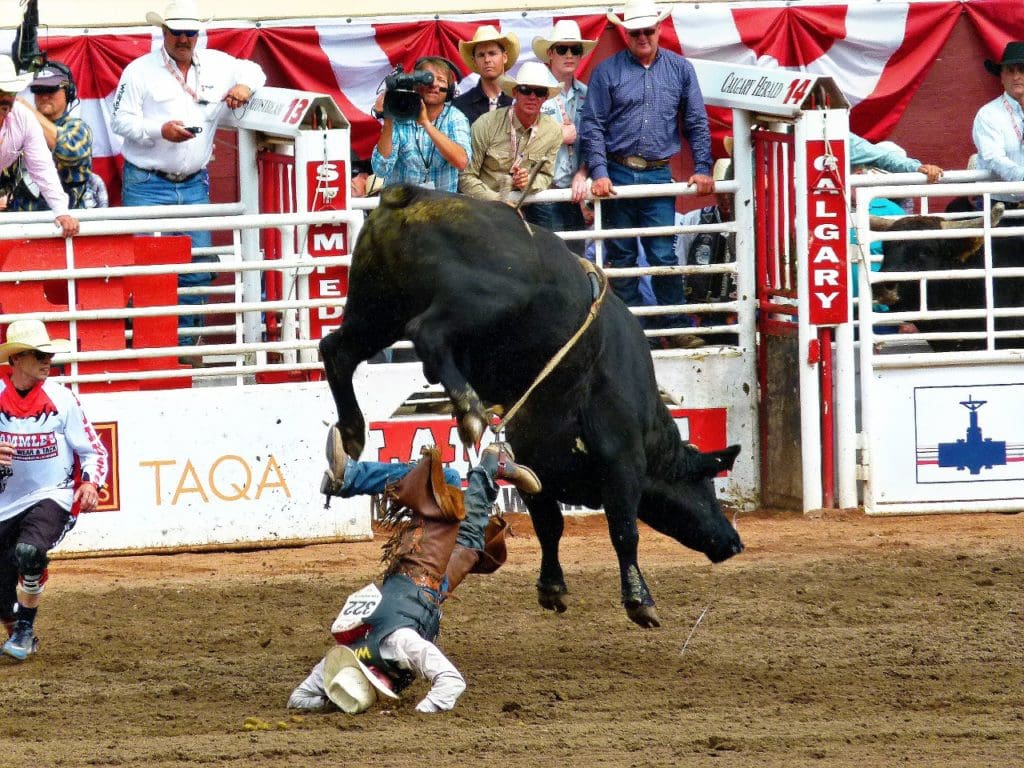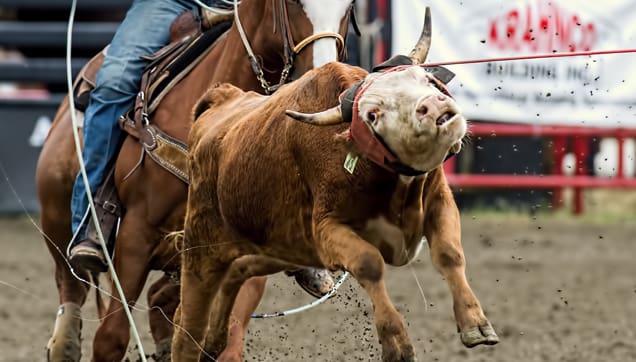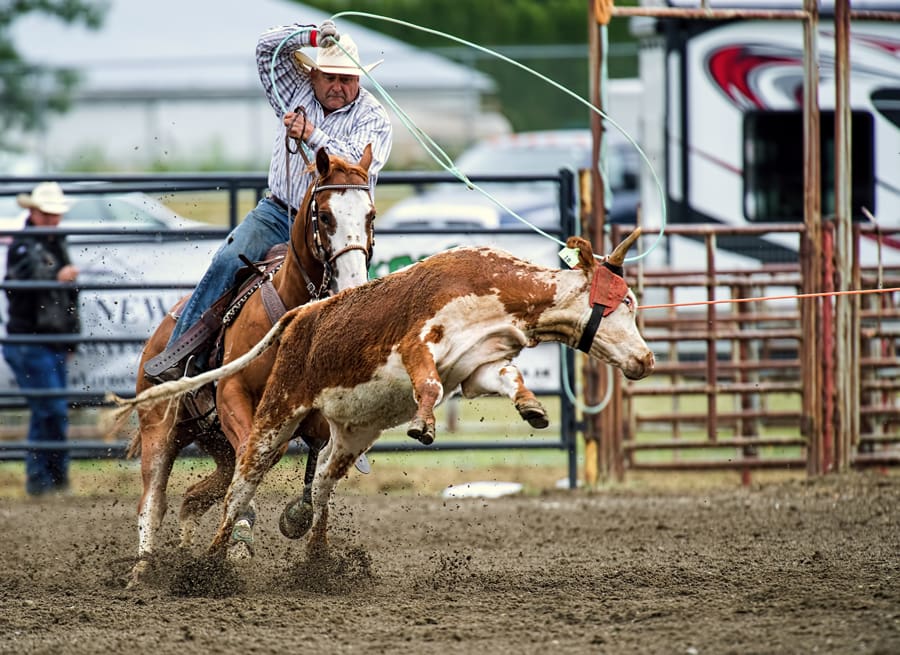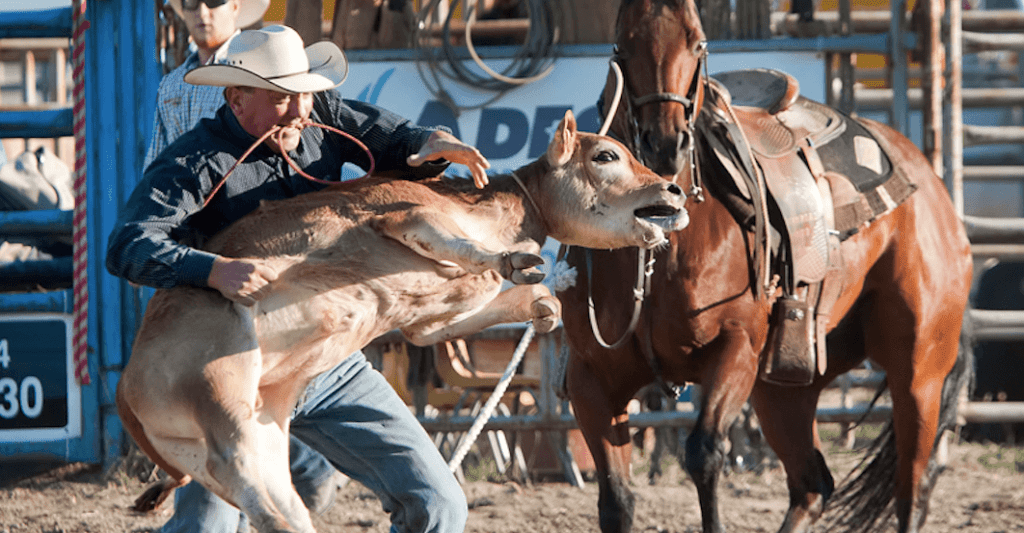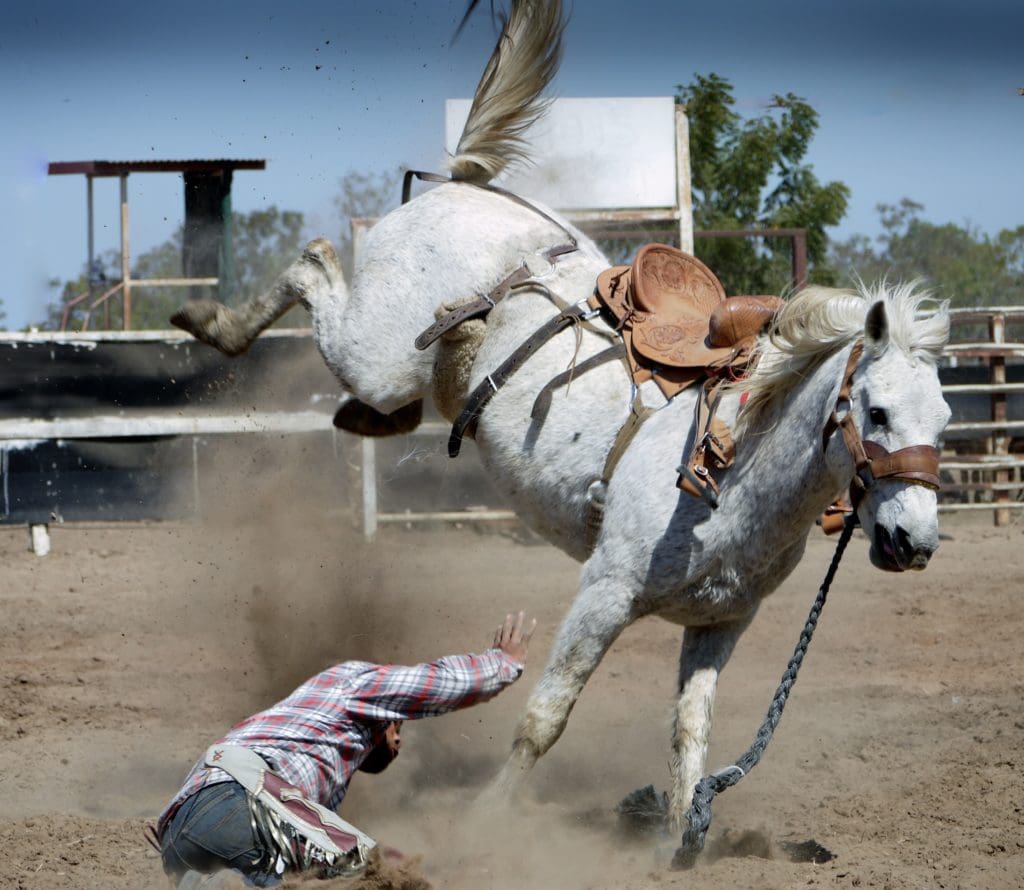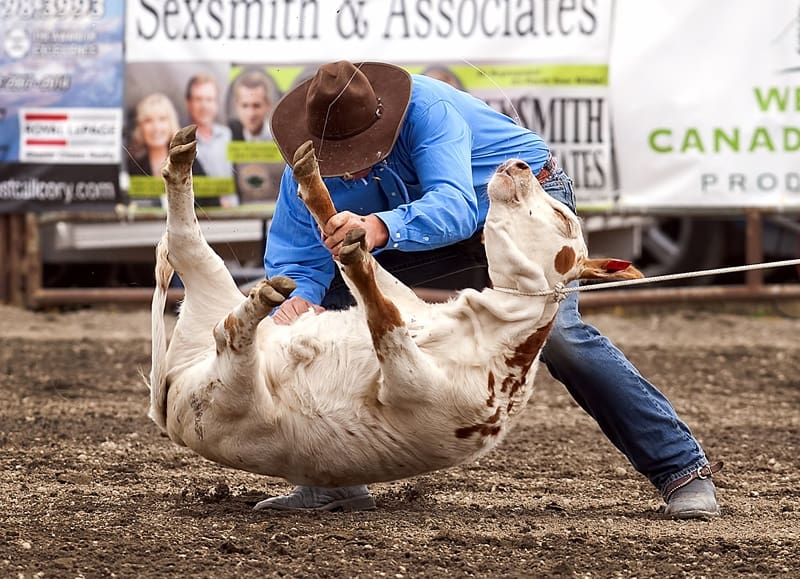The reality of rodeo
The VHS is opposed to rodeo because most rodeo events involve the use of fear, stress or pain to make animals perform. There is also considerable risk of injury or death for the animals. These risks and the suffering the animals endure are especially unacceptable, given the unnecessary nature of rodeo as public entertainment.
Virtually all animal welfare organizations in Canada oppose cruel rodeo events, including the BC SPCA and Humane Canada. In British Columbia, the City of Vancouver, the District of North Vancouver and the City of Port Moody have banned rodeos. Polling shows a growing majority of British Columbians (65%) and Canadians (67%) are opposed to the use of animals in rodeo events.
Latest news & current campaigns
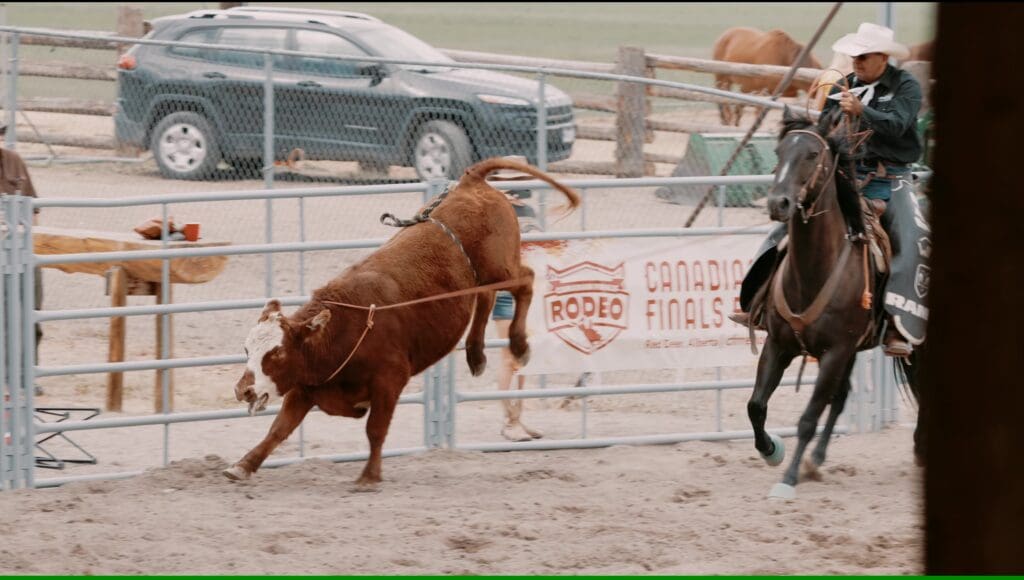
A stressful and fear-filled glimpse into an animal’s first rodeo
Article originally published in the Daily Hive. Bring up animal welfare to a rodeo supporter, and you’ll often hear the same set of arguments: these animals are trained. They’re used to it. They’re athletes akin to other rough sports, like football or boxing. While these arguments are easily unravelled, new footage from this year’s rodeo in Merritt kicks…

New footage captures inhumane handling and stressed animals at B.C. rodeos
Newly released footage from several B.C. rodeos reveals recurring animal welfare issues, including animals being hit, kicked, and having their tail and ears twisted and pulled. New polling shows growing public opposition to the use of animals in rodeo events. 65% of B.C. residents and 67% of Canadians are opposed to the practice. Use the…
What happened at this year’s Chilliwack and Langley rodeos
The return of the Chilliwack rodeo this year, along with a controversial new rodeo held in Langley Township, has raised concerns about the well-being and welfare of animals made to perform in rodeo events. Video footage taken at both rodeos this summer shows stressed and frightened animals being roughly handled and deliberately agitated into fleeing and bucking.
Specific rodeo events

Calf roping (or tie-down roping)
In this timed event, handlers deliberately agitate a calf who is held in a chute (often by tail-twisting, pulling ears, or knocking the calf’s head against the bars) before being released into the arena and chased by a horse and rider.
The calf, running at speeds averaging 27 miles per hour, is roped around the neck and jerked to a sudden stop. If the animal struggles to their feet, they will be lifted up and thrown down to the ground by the rider, who then ties three of calf’s feet together.
Research on stress hormones and behavioural evidence shows that calves experience acute stress when chased, roped, lifted and thrown to the ground during roping events.
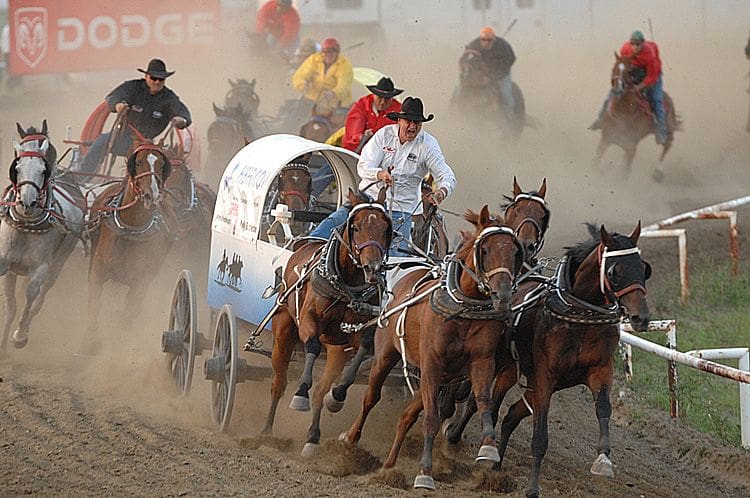
Chuckwagon racing
Invented at the Calgary Stampede in 1923, the chuckwagon race (dubbed the ‘half-mile of hell’) involves several teams of horses pulling wagons in a figure eight course and racing down a track to the finish line. Several other rodeos in Western Canada have adopted this event.
At least 75 horses have been killed in the Calgary Stampede chuckwagon races since the VHS started tracking fatalities in 1986, mainly due to crash injuries and heart attacks brought on by stress. In the last two decades, there have only been 3 years in which the races did not result in horse fatalities: 2003, 2004, and 2016.
The structure of the chuckwagon race is inherently dangerous, due to the high speed and close proximity of the horses and wagons to each other, which also presents a risk of creating a chain reaction if one horse falls or is injured. The use of thoroughbred race horses in the event has been another concern, with animal scientist Dr. Temple Grandin noting that thoroughbreds are often overbred for speed, rather than skeletal strength, making their legs susceptible to injury.

Team roping
In this event two mounted cowboys attempt to rope and immobilize a steer in the least amount of time. The lasso is thrown around the steer’s neck by one rider and the other ropes the hind legs. The steer is then pulled from each end and stretched to bring him to the ground. Sometimes the steer is stretched so violently that all four feet leave the ground and he is suspended in mid-air by the neck and rear legs.
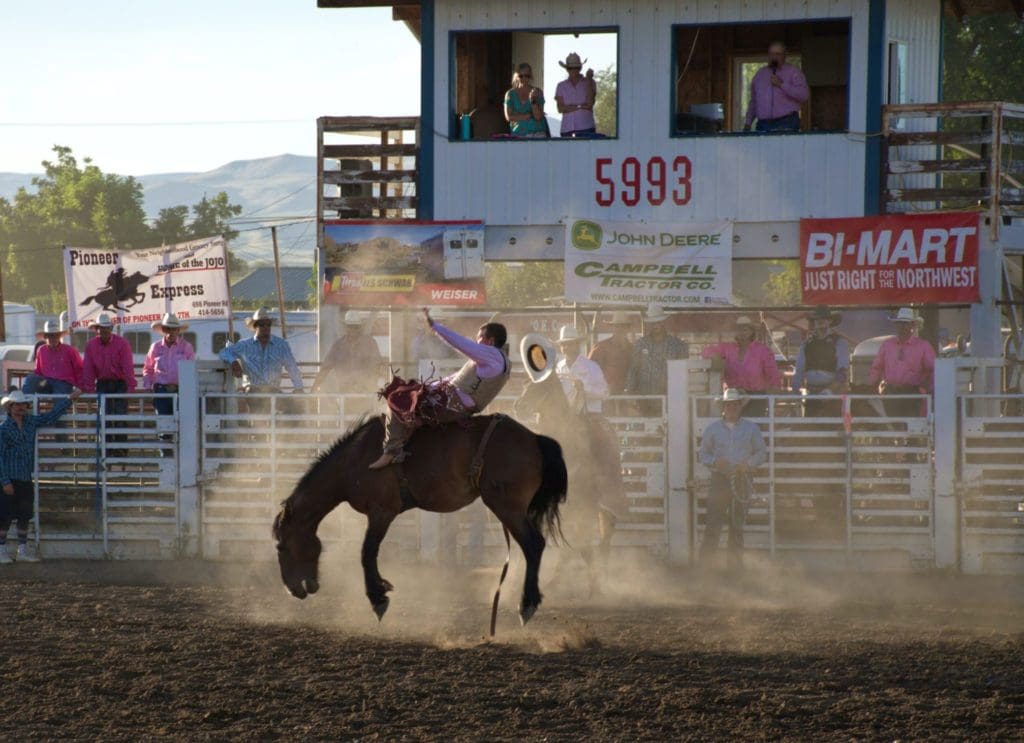
Bareback, saddle bronc and bull riding
Riders compete to see who can stay mounted on a horse or bull for a set time. The discomfort and stress the animals are subjected to during the event, through the use of a flank strap and spurs, triggers their natural fear response of bucking, similar to how they would react defensively to an attack from a predator. The “flank strap” is tied around the animal’s sensitive underbelly and tightened as they leave the chute, causing them to buck. The animal will buck until the strap is released. The animal is clearly being tormented by the flank strap and the desire to get the rider off. In bucking events, part of the rider’s score is based on their use of spurs on the animal.
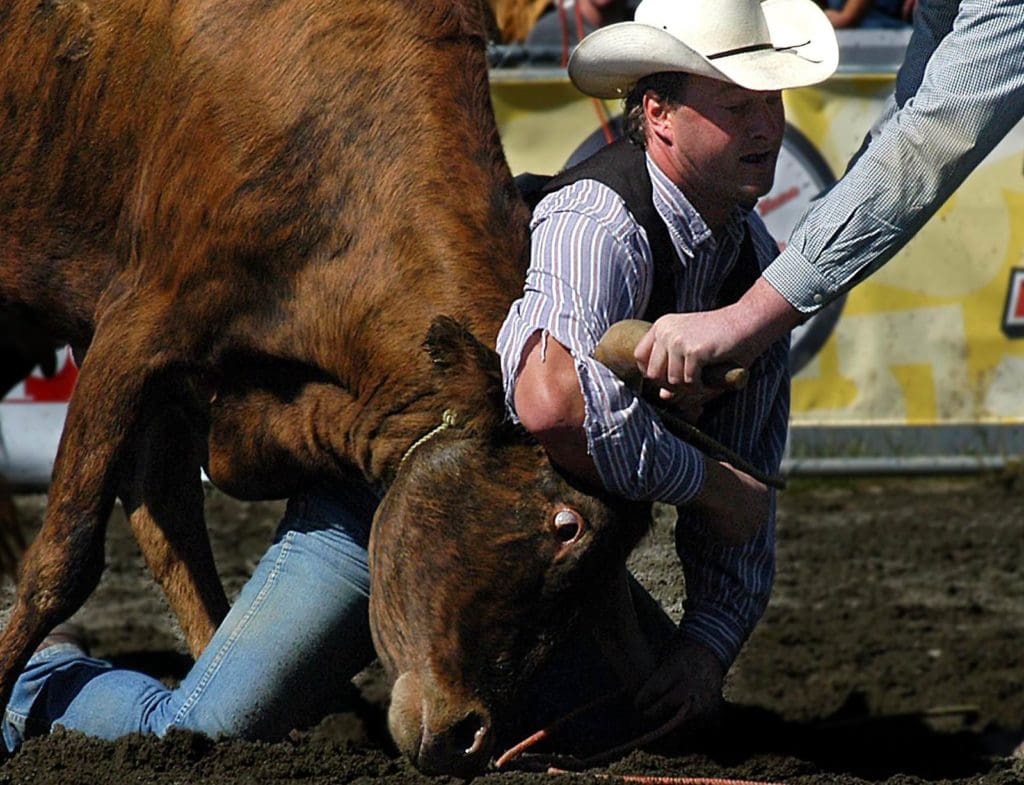
Wild cow milking
This timed event involves three cowboys chasing a roped cow, grabbing and twisting the animal’s head to stop them long enough for one cowboy to take milk from the cow’s udder.
Extreme stress can be observed amongst the cows as they attempt to escape from the participants chasing them.
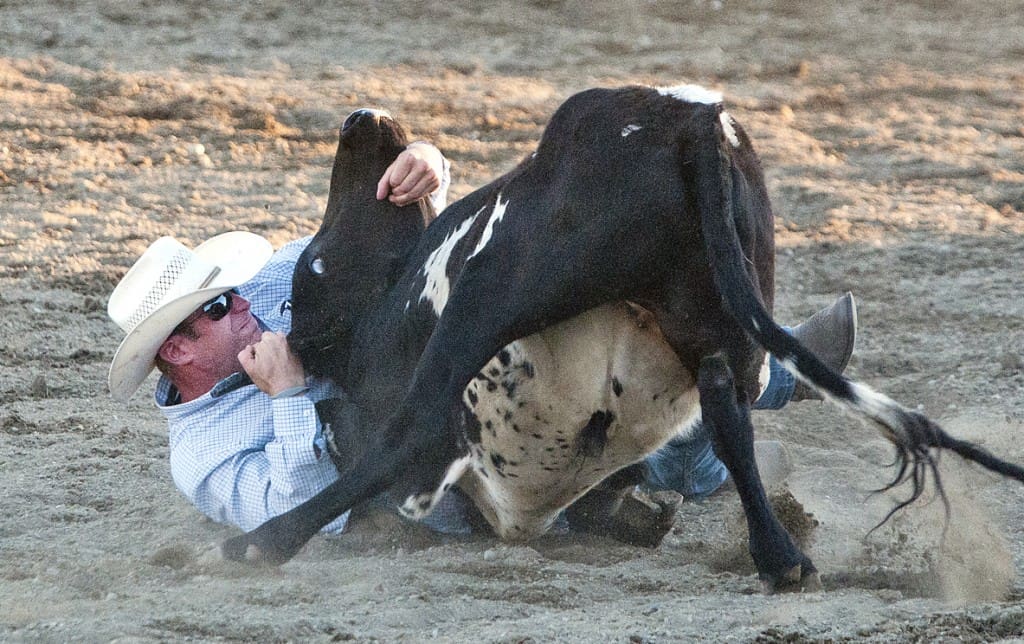
Steer wrestling
Here, a rider jumps from his horse on to the head and neck of a running steer. He then twists the neck of the steer until the animal falls to the ground. This can result in neck injuries – at a previous Cloverdale Rodeo event, a steer’s neck was broken and the animal had to be killed.
Arguments defending rodeo
A number of arguments have been put forward by the rodeo industry to defend rodeo. Following are some of the most common, with counter arguments:
Changing public attitudes
Communities are increasingly moving away from hosting inhumane rodeo events. The Abbotsford Agrifair rodeo was cancelled in 2016 after a VHS campaign and pressure from other advocates and concerned citizens, as was the Luxton Rodeo on Vancouver Island in 2015. In 2007, the Cloverdale Rodeo eliminated four events – calf roping, steer wrestling, team roping and wild cow milking.
In response to public pressure, the Calgary Stampede has made a number of rules changes and measures, as has the Chilliwack Fair rodeo. These changes do not go nearly far enough to address the suffering of animals used in rodeo, but they demonstrate the impact of changing public opinion.
In May 2006, after representations from VHS, Vancouver City Council voted unanimously to prohibit a number of rodeo activities. The District of North Vancouver and City of Port Moody have also prohibited inhumane rodeo events and practices. The elimination of rodeo in Vancouver, and its partial curtailment in Surrey, Abbotsford and Vancouver Island, speak to the changing public attitudes around the use of animals in rodeo events.
Rodeo photos
